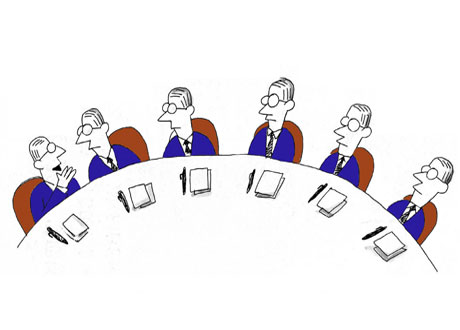What Is Idea Management?
Traditional innovation can only take your business so far, and without an evolution of processes, you might find it harder than ever to move new ideas forward. Introducing structures and systems to formulate, organize, and act upon new ideas is one of the best ways to optimize internal innovation. This practice is better known as idea management, and in this article we will define and discuss idea management in full.
Calculating the ROI of an Idea: Ideas That Saved Time
Crowdsourcing and open innovation initiatives are vital by bringing vast stakeholders together to share ideas on complex problems and opportunities. Much of the focus is set on engaging the crowd yet deciding which ideas to take a risk on requires data on the likely impacts and costs.
How Do You Uncover Unseen Problems?
Anyone who works in the problem definition space knows the pitfalls of hidden issues. Solving a problem is sometimes dependent on who is articulating the problem, the lens with which they view the world, and the space that they have at the table...
What Role Does Research Play in Innovation?
A lot of innovation programs have naturally grown out of research and development groups, but most true innovation is a departure from what’s come before so what role does the “research” in “research and development” play in innovation?
The Role of Innovators at Large Organizations
In-house innovation programs continue to proliferate and our concept of the innovator has evolved alongside them. Now we no longer think of a creative genius sitting alone in their tower coming up with creative ideas. Now, innovators can play a number of different roles within an innovation program beyond idea author. A lot of interest and attention is being paid to this concept, because organizations that are looking to sponsor and train innovation skills at their organization need to understand what skills matter most when it comes to creating meaningful change. After all, it’s an important part of professional development nowadays. Every employee at any organization needs to be able to keep up with the rapid pace of change. So here are a few of the roles that innovators play at large organizations.
5 Top Careers for Innovative Problem-Solvers
For some, problem-solving comes naturally, and others most develop the skill. In any case, there are some careers that are especially suited for people who enjoy managing people, events and things to create positive outcomes. These professionals are highly skilled at using information and knowledge to resolve issues and engineer solutions. Certain fields require just this kind of heightened skill in problem resolution, and they reward professionals who are up for the task handsomely.
The Six Step Innovation Lifecycle
Innovation isn’t a one-time project. It’s a continuous activity. Which is why we are seeing numerous organizations adding an innovation department to their company infrastructure. In fact, in a recent survey of our client base, we were surprised to learn that almost 40% of our customers operate out of a dedicated innovation group.
To Transform Your Business, Do This
When the Commission for Environmental Cooperation launched a challenge to the youth of North America, they received hundreds of unique, green business proposals. The young entrepreneurs competed for seed funding and came up with some truly disruptive ideas.
Impact Assessment: The Innovation Paradigm Shift that is Coming
In the context of business management and economics, innovation has mainly been considered as a source of profit and growth. But innovation can also have a transformative role and recently more and more innovators and entrepreneurs are not only considering the financial returns of their projects, but also the societal impacts that they might bring with them.
How to Choose the Right Technology for Your Startup
In today’s era of hyperconnectivity, technology is the backbone of every successful business, irrespective of its size. For your startup, the choice of right hardware and software pieces means not only managing your team properly, but also boosting their productivity, getting the most of every project, and saving a lot of time and money.
What’s Keeping CInO’s Awake at Night: The Latest Corporate Innovation Trends From a Range Of Recent Conferences
Over the past couple of weeks, I have participated in several conferences / events, to better understand key trends in corporate innovation. Each event was excellent, but also very different in scope, audience and approach.
Don’t “Fiddle” with the Crowd – Ask it Better Questions Instead
As the examples of successful use of crowdsourcing to address complex technical, business and social issues grow in numbers, so do the instances of failed crowdsourcing campaigns. To make crowdsourcing a widely recognized idea-generating and problem-solving tool, it’s imperative to understand the reasons of why this tool can fail or underperform.
How Quantum Computers will Advance Machine Learning, Big Data, and Artificial Intelligence
Quantum computers will allow artificial intelligence, big data, and machine learning to become far more advanced. Many researchers are working on the advancement of quantum computers, and it won't be long before their use becomes widespread.
Learning to Communicate With Difficult Co-Workers
No matter where you work, there's always some difficult co-workers you're going to have to deal with. Instead of wishing the situation away, which never works, it's time to learn how to perfect your skills for dealing with them.
Making Innovation More of a Science And Less of an Art
One of the greatest challenges facing innovation professionals is to find the right approach to a given innovation problem. Whether that’s instilling the innovation mojo in a large corporation or simply helping teams become more innovative, the ways to do this seem to be more of an art than a science. However, during the last ten years there has been a strong push to turn this art form into more of a science.
The Catalyst Network: Expanding the Reach and Impact of your Innovation Team
To amplify your company's presence and scale your influence, innovation teams need to harness informal networks and not simply rely on formal structures to create a thriving innovation eco-system. Enter Innovation Catalysts: natural champions who are believers, idea generators, problem solvers, mentors and sponsors in your organization.
The Frustrated Innovation Team: What Should They Do?
Many executives talk a lot about innovation, but they don't really know how to make it happen. A corporate innovation team asks themselves: How do we "educate" our executives on innovation management and develop stronger corporate innovation capabilities together?
3 Advantages to Collaborating on Innovation as a Global Community
The list of problems that need to be solved is growing almost as fast as our solutions are. Some are concerned about the lack of food and water security, others worry about access to education and a whopping 45.2% of millennials think today’s most pressing problem is the destruction of natural resources. But with the proliferation of problems, organizations and enterprises are broadening their search for innovative solutions and many of them are looking to the crowd for ideas.
Creativity is Key: Tips on Avoiding Groupthink
It’s awesome when everyone agrees, isn’t it? Yes—and no. Most of us have, at some point, fallen into the trap of groupthink to avoid conflict and promote harmony in a group, whether at school, work, or on a committee. Groupthink has its perks: everyone feels comfortable, and there’s no risk of tension among members. It’s safe. Easy. Unfortunately, it can also kills creativity and innovation.
Transformative Constraints — Why They’re Core to Innovation and Inventiveness
They say creativity loves constraint. In fact, if you ask professional, creative people about their “limitations” they naturally see them as exciting and stimulating. Engineers and software designers for instance see constraints as absolutely fundamental to problem solving. So why does constraint get such a bad wrap? Why do so many people see them as things to be managed and talked around and spun? In this week’s episode, Adam Morgan delves deep into this topic and explains his process for creating a framework to understand constraint and a process to help people successfully manage it.
Product Innovation of a Trolley: A 3-step Journey
Consider the world’s most ingeniously designed products. Whether it’s your smartphone, your favorite racing bike or a nifty robotic lawn mower – they all have a one thing in common: rather than being conceived overnight, they were shaped by a series of consecutive, systematic innovations. But how does such a structured product innovation approach look? This CREAX project illustrates the ins and outs.
Challenged by Innovation? Someone May Have Already Solved Your Problem
In 1946, Soviet inventor and science fiction writer Genrich Altshuller developed a methodology called TRIZ. It became known as "the theory of inventive problem-solving" and was based on a simple premise: across different disciplines and applications, the same challenges occur again and again. Unfortunately, people keep solving nearly identical problems from scratch. The main lesson from TRIZ is this: if you understand how your innovation challenge is similar to someone else’s, you can reapply solutions that already exist, instead of reinventing the wheel time and again.
Avoid Innovation Paralysis – Why all Companies Can and Must Embrace Change
Someone once told me this: “Innovation is like an apparition of the Virgin Mary: one person saw her, but everyone talks about it.” Although funny, the quote aptly captures an attitude towards innovation that exists in many companies today. Innovation – and the skills that enable it – are sometimes considered as mystical gifts, preserved for the chosen few. In other cases, innovation is feared, because it involves unregulated processes, risk taking and investments with unpredictable outcomes. In this blog post, I’d like to make a case against this kind of innovation paralysis. Every company must innovate, and with the right understanding of the word ‘innovation’, every company can.
Urgently Wanted: The Design Driven Manager
The potential of Design Thinking becomes more and more visible because organizations like Apple, Coca-Cola, IBM, Nike en Proctor & Gamble not only show overtly that they use it, but start showing significant results. They outperformed their peers in the last decade with 219%, measured by the Design Value Index (assessment by Design Management Institute).
Platform Disruption Wave
In the new global environment innovation is tending towards Platform Disruption, and is more focused on waves of change than single technology disruptions. The competitive capability of different innovation cultures, rather than technology, therefore becomes the critical success factor. In this article, Haydn Shaughnessy examines product and service platforms as the new organisational form and suggests that modern enterprises need to take the leap to a new way of business.
Six Levers For Solving The Corporate Innovation Problem – Part 3
This is the third part of a three-part article series. We are investigating why – despite all the investments made into the early phase of innovation – innovation results remain disappointing. We call this the “corporate innovation problem”. In the first part we illustrated that companies are investing heavily into the early phase of innovation. In the second part, we provided some metrics on the corporate innovation problem and found that the corporate innovation problem actually consists of a “complexity” problem” and a “system problem”. In this article, we show six levers to change the “system problem” and think this is the way to solve the corporate innovation problem – and ultimately to increase innovation performance.
Six Levers for Solving The Corporate Innovation Problem – Part 2
This is the second part of a three-part article series. In the first part we illustrated that firms are investing heavily into the early phase of innovation. In this second part we show that despite of all these investments, innovation results remain disappointing. We call this the “corporate innovation problem”. We provide some metrics and find that there are two root causes. In the upcoming third part we will suggest that six levers can be used to address one of the root causes. We believe that moving these levers can provide a solution to the corporate innovation problem – and ultimately lead to increased innovation performance.
Six Levers for Solving the Corporate Innovation Problem – Part 1
Innovation is at the top of the Management Agenda for many companies. For excellence in innovation, companies have to master the chain of activities from discovering valuable insight into unmet customer needs to successful market adoption. However, despite large and growing investments into innovation, results remain disappointing. We call this the “corporate innovation problem”. In this 3-part article series we dig deeper into this problem and find that there are actually two root causes for it. We focus on one of the root causes – the “system problem” – and work out six levers of improvement. Acting on these levers offers a solution to the corporate innovation problem and ultimately increases innovation performance.
















